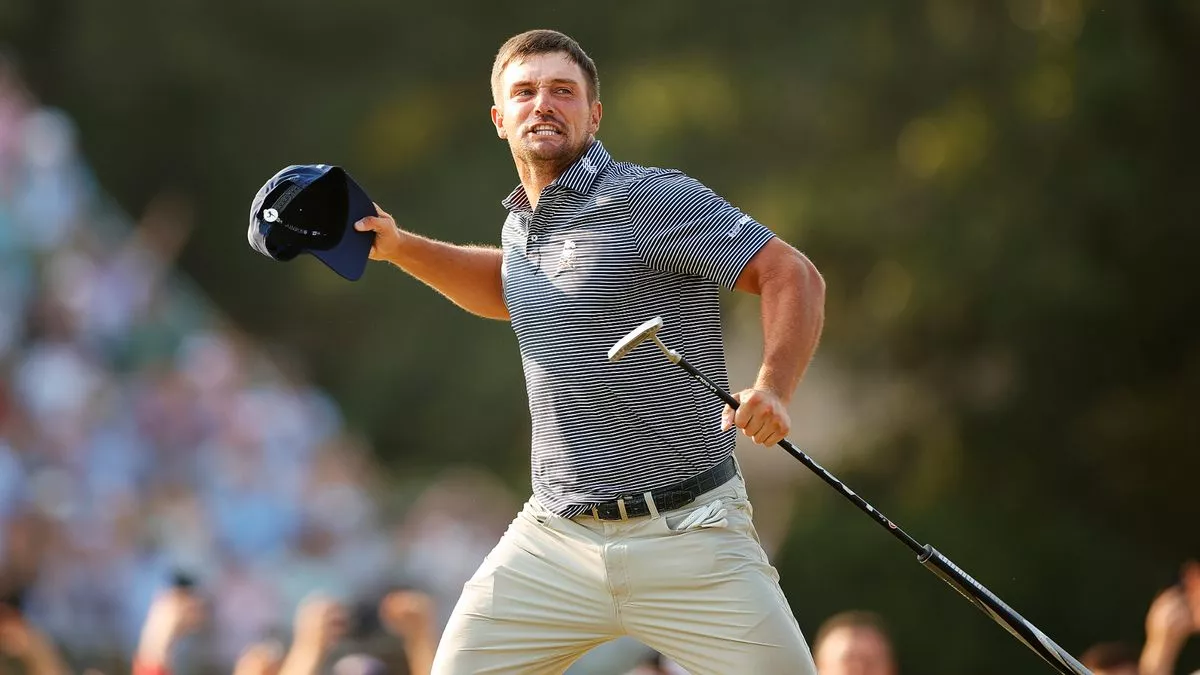PGA Tour caddie wanted Bryson DeChambeau win reviewed by USGA after putter controversy
“Did Bryson DeChambeau’s Putter Give Him an Unfair Advantage? Veteran Caddie Sparks Controversy After U.S. Open Triumph”
In an event that will be etched in golf history, Bryson DeChambeau clinched his second U.S. Open title at Pinehurst No. 2 this June, a victory that quickly became one of the year’s biggest sports moments. Yet, as DeChambeau celebrated, his win stirred up questions across the golf world regarding the legitimacy of his self-designed equipment. A well-known PGA Tour caddie took to social media, calling for an official review of DeChambeau’s putter by the United States Golf Association (USGA) to ensure it met every regulation.
DeChambeau, a standout in both the LIV Golf league and the sport overall, found himself embroiled in controversy, despite holding a solid three-stroke lead heading into the final round. Rory McIlroy, who was trailing, made a remarkable comeback and was within striking distance of his first major title in ten years. But in a shocking twist, McIlroy faltered over the last five holes, squandering a two-shot lead and ultimately allowing DeChambeau to claim the trophy. The victory showcased DeChambeau’s skill and mental toughness, but the equipment he used—particularly his unconventional putter—quickly became a talking point.
Known for his unique approach to the game, DeChambeau has invested a great deal in customizing his equipment, especially his putter, which is specifically designed with a grip that locks against his forearm for added control. The design has allowed DeChambeau to enhance his precision, but it’s also raised eyebrows.
During the tournament, Kip Henley, a respected PGA Tour caddie, was one of millions watching the action unfold. Henley suggested on social media that the USGA should inspect DeChambeau’s putter to verify its compliance with the rules. “If I’m a player around the lead in the U.S. Open, I would ask the USGA to check the specs on this putter,” Henley posted on X. “The shaft has to lean away from the head at least 10 degrees. It sure looks vertical. Not being a —- or hate him at all, but it is a rule.” Henley’s comments ignited an immediate wave of reactions, with some calling for an inquiry while others saw his comments as a lighthearted jab.
Henley, who last worked for the late Grayson Murray before their professional relationship ended, clarified that his comments were meant as a joke. Responding to PGA Tour member Andrew Putnam, who humorously suggested checking DeChambeau’s driver and even testing his caddie Greg Bodine, Henley replied, “Lol. I don’t hate the boy at all, and I completely love his looper Bodine! He’s a way better carrier than me. I was just giving us something to talk about. I’m fine with DeChambeau winning!!”
The following day, Henley sought to diffuse the situation further, addressing those who had taken his remarks seriously. “Jesus, Mary and Joseph, you people have lost your minds! Don’t you think I would understand that Bryson’s equipment has been inspected 1,000 times, and his putter would certainly be conforming?” Henley posted. He explained that his comments were intended to be “tongue-in-cheek,” a lighthearted tweet to spark some discussion. “[Putnam] got it quickly and threw his funny jab. Would any true golfer think Bryson’s putter hasn’t been inspected 100 times? They measure the thickness and rebounding qualities of drivers, for God’s sake.”
Despite Henley’s clarification, the controversy shed light on the delicate balance between innovation and regulation in golf. DeChambeau’s unique approach to equipment has often blurred the lines, challenging traditional norms within the sport. Known for his meticulous, almost scientific approach to the game, DeChambeau has cultivated a reputation for pushing the limits, whether through his unusual swing mechanics, his powerful drives, or his distinctive choice of clubs.
While Henley’s remarks may have been intended in jest, they echoed a sentiment shared by some within the golf community—an ongoing curiosity about DeChambeau’s equipment and whether it could provide a competitive edge. This incident is only the latest in a series of debates about golf technology and its impact on the game’s integrity.
For DeChambeau, the scrutiny is nothing new. His success has often come with a side of controversy, and his equipment choices have regularly attracted attention. With this latest victory, DeChambeau stands as a figure of both admiration and debate, celebrated for his achievements yet always under the microscope.
Whether his putter truly provides any advantage or simply reflects his unique style, one thing is clear: DeChambeau’s influence on the sport is undeniable, and his victory will continue to spark conversation long after the final dround at Pinehurst.






